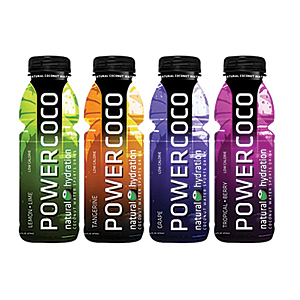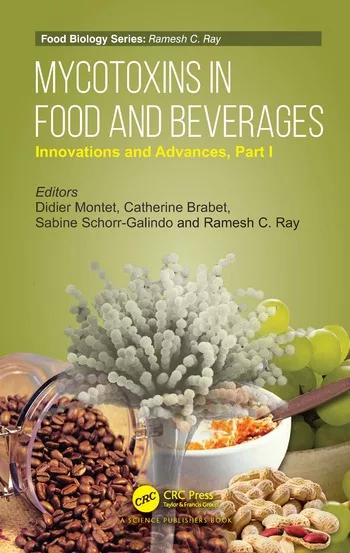Blending brings more opportunities for tropical fruits
Manufacturers use blends to incorporate tropical fruits
As consumers embark on exotic vacations to tropical regions of the world, they encounter a number of new foods and beverages. But when consumers return home, their tastes for those tropical sensations are not always as far removed as their recent holidays.

|
| PowerCoco’s same-named product is an example of the proliferation of coconut water. PowerCoco contains coconut water from concentrate and is available in Lemon Lime, Tangerine, Grape and Tropical Berry flavors. |
In Beverage Industry’s 2012 New Product Development Survey, 14 percent of respondents selected tropical fruit as an anticipated best-selling flavor for 2012, making it No. 6 overall on the list. Twenty-eight percent of respondents reported tropical fruit as a top flavor used in 2011 in the same survey.
Although beverage manufacturers are willing to incorporate tropical fruits into their products, there remains to be some discussion about what is considered a tropical fruit.
“Defining tropical can sometimes lead into an interesting discussion, but we see two lines of tropical fruits being used in beverages,” says Greg Kaiser, president of Encore Fruit Marketing Inc., San Dimas, Calif. “There are mainstream items like banana, coconut, pineapple, mango, passion fruit, papaya and guava, to name a few. But we also see the introduction of some of the more lesser-known fruits growing in tropical regions that may be indigenous to only certain areas of the world. As examples, we see caja from Brazil, sour sop (graviola) from South America and Southeast Asia, calamansi from Southeast Asia, acerola from Brazil and Vietnam, etc.”
Kaiser notes that the mainstream tropical fruits became widely accepted because consumers like the flavors and exotic lifestyle that the fruits connote. The fruits also remind consumers of their vacations to destinations such as Hawaii and the Caribbean, he adds.
Changes in U.S. demographics also could be tied into mainstream acceptance. “As the ethnic diversity of the U.S. population increases, we see more demand for the tropical fruits that were part of the daily diet in some of the countries contributing to our population diversity,” Kaiser says. “From the more exotic or newer tropical fruits, we see increasing interest from consumers because of the drive to create new flavor systems and also for the perceived health benefits some of these more exotic tropical fruits may provide.”
In the Beverage Industry New Product Development Survey, 39 percent of respondents placed mango among the top flavors used in 2011, while pineapple was named by 38 percent. Also on the list were coconut, pomegranate, acai, banana and passion fruit at 34 percent, 32 percent, 30 percent and 23 percent, respectively.
Of those mentioned, mango was the only one that made the Top 10 list of flavors anticipated to be best-sellers in 2012 with 15 percent of respondents naming it in the Beverage Industry survey.
Flavorful inspiration
Diversity and tropical travels might be helping to jumpstart the acceptance of tropical fruits, but it’s the flavor profiles that keep consumers coming back.
“Tropical fruits are still high on our sample request list received from customers,” Kaiser says. “Beverage developers still see them as interesting and flavorful ingredients for developing new beverages.”
Although the flavors are appealing to many people, consumers also are looking for products that don’t just feature tropical fruit flavors, but actual tropical fruits.
“Many consumers want to drink products that contain the actual fruit that is being advertised on the label, not just the flavor. So, if a beverage product says mango on the label, the product should contain mango puree or concentrate, not just a flavor,” says Don Giampetro, vice president of innovation at iTi Tropicals Inc., Lawrenceville, N.J. “As with all juices, however, calories are a concern.”
Taking calorie counts into consideration, one tropical fruit has the ability to provide a low-calorie solution for all juice products.
“That is where coconut water comes into play as a perfect product that can be labeled as a juice and blended with other juices for overall caloric reduction,” Giampetro says. “Particularly, this is exactly [what] beverages to be consumed at schools need — lower calorie, high juice content beverages for children.”
In addition to its low-calorie profile, coconut water has become more popular because of added benefits such as natural electrolytes, potassium, sodium, calcium, magnesium and phosphorus, Giampetro says.
“The use of coconut water as an ingredient in more complex fruit/juice systems is becoming more and more popular,” he says.
With the proliferation of 100 percent coconut water products in the last few years, the ingredient has shown its ability to be a standalone juice; however, its future as a blended juice could find a place in coffees, teas and low-calorie juices.
“With coconut water, [we foresee] 100 percent juice products that are lower in calories,” Giampetro says. “Blend some other juices with coconut water, and you can easily accomplish this. In the case of smoothies, for sure, banana is a terrific product and continues to be a terrific product to build viscosity and mouthfeel naturally.”
Smoothies have been a segment in the beverage industry where tropical fruits have seen success.
“The continued growth of smoothie-type beverages, which contain a lot of pulp, fiber and flavor, are still the main drivers in contributing to the growth of tropical fruit consumption,” Encore’s Kaiser says.
Kaiser notes that popular brands such as Bolthouse, Naked Juice and Odwalla feature smoothie beverages where one might see a lot of tropical fruit usage. Tropical fruits also can be found in combination with vegetable juices and in clarified form with more traditional clear juices, including apple and peach, he adds.
Steve Corson, corporate culinary chef with Selah, Wash.-based Tree Top and Northwest Naturals, notes that clarified versions of tropical fruits are becoming more popular.
“Clarified juices work better for clear products where you don’t want precipitation and can eliminate issues involved with pulpy juices,” he says. “It is still considered 100 percent juice, and you are still using the stated fruit.”
Blending tropical fruit with juices is not an uncommon practice for formulation.
“I believe the bulk of the consumption today in beverages is for mixed fruit products rather than standalone flavors,” Kaiser says. “Whereas you can easily drink a 100 percent mango nectar, you cannot drink passion fruit juice on a 100 percent basis. Most of the tropical fruits are blended with other juice items and purees to make a smoothie or complex beverage.”
Mango and guava are popular tropical fruits featured in blends, iTi’s Giampetro says. “Mango blends well with other fruits, such as peach and orange, because of its color,” he says. “Guava has a tart bite, is high in vitamin C and blends well with other fruits like pineapple.”
Corson says that tropical fruit varieties typically are blended with at least one other fruit. “Cost and availability drive most of that reasoning, but also, I think it adds depth to the flavor profile,” he says.
However, that blending doesn’t have to be limited to other fruits and fruit juices.
“I think we are going to start seeing more combinations of these tropical fruits with spices and herbs,” Corson says. “Possibly even florals, getting more creative with the flavor combinations, [such as] mango rose, mango lime cilantro, papaya black pepper, pineapple basil, etc.”
Natural benefits
Tropical fruits are well-known for their inherent benefits. For example, acerola contains high levels of vitamin C, according to iTi’s Giampetro. However, the natural and organic trend that is affecting much of the beverage industry can be more challenging when it comes to tropical fruits.
“These are important trends,” Giampetro says. “Natural products will continue to grow as more and more consumers look for these products. Organic is a little more challenging as sourcing enough products organically when it comes to tropicals [is] the issue. With fresh fruits such as organic bananas, mangos, guava and coconut entering the market and growing, this will continue to transcend into the juice area, and consumers will be looking for organics in the juice products they buy as well.”
Encore’s Kaiser notes that because of where tropical fruits are typically sourced, it can be difficult to monitor and gauge the demand for this trend.
“The tropical products tend to come from more diverse and smaller farms with a limited capacity for organic farming and certification,” he says. “And some fruits just do not hold up well with good crops under organic farming criteria. As an example, there is not a lot of organic pineapple out there.”
Although organic availability is limited, opportunities are still abound.
“With the increase in interest in organics, we are seeing more variety of tropical fruits being offered,” Tree Top’s Corson says. “There still are limitations on the quality and quantity in regards to organic, but that has also increased the acceptance of blending a variety of fruits in beverages.”
But limitations on organic tropical fruits’ availability have not impacted the demand.
“We continue to see growth,” Giampetro says. “We do see slower growth in some areas than others, but for sure when a newer item comes out, we see the growth jump once again. Throw in items like guanabana, tamarind, dragonfruit and many others [and] add the growth of coconut water to this, and you have a recipe for continued and sustained growth.”
Encore’s Kaiser also sees more opportunities for tropical fruit in the beverage space.
“We do see continued exploration of availability of any new tropical fruits that can contribute both flavor and some unique health benefits,” he says. “There are still many, many fruits in a country like Brazil that have not been fully explored for commercial application and growth. The difficulty is getting these to market in an ingredient form that will meet current and expected future [U.S. Food and Drug Administration] requirements from factories with verified third-party audits, etc.”
Kasier adds that some tropical fruits are becoming more affordable as they become more mainstream.
“Some of the mainstream tropicals, such as mango, banana and guava, are fairly low-cost ingredients and have more price stability than other commodities, such as apple and orange, for example,” he says. BI
Looking for a reprint of this article?
From high-res PDFs to custom plaques, order your copy today!








